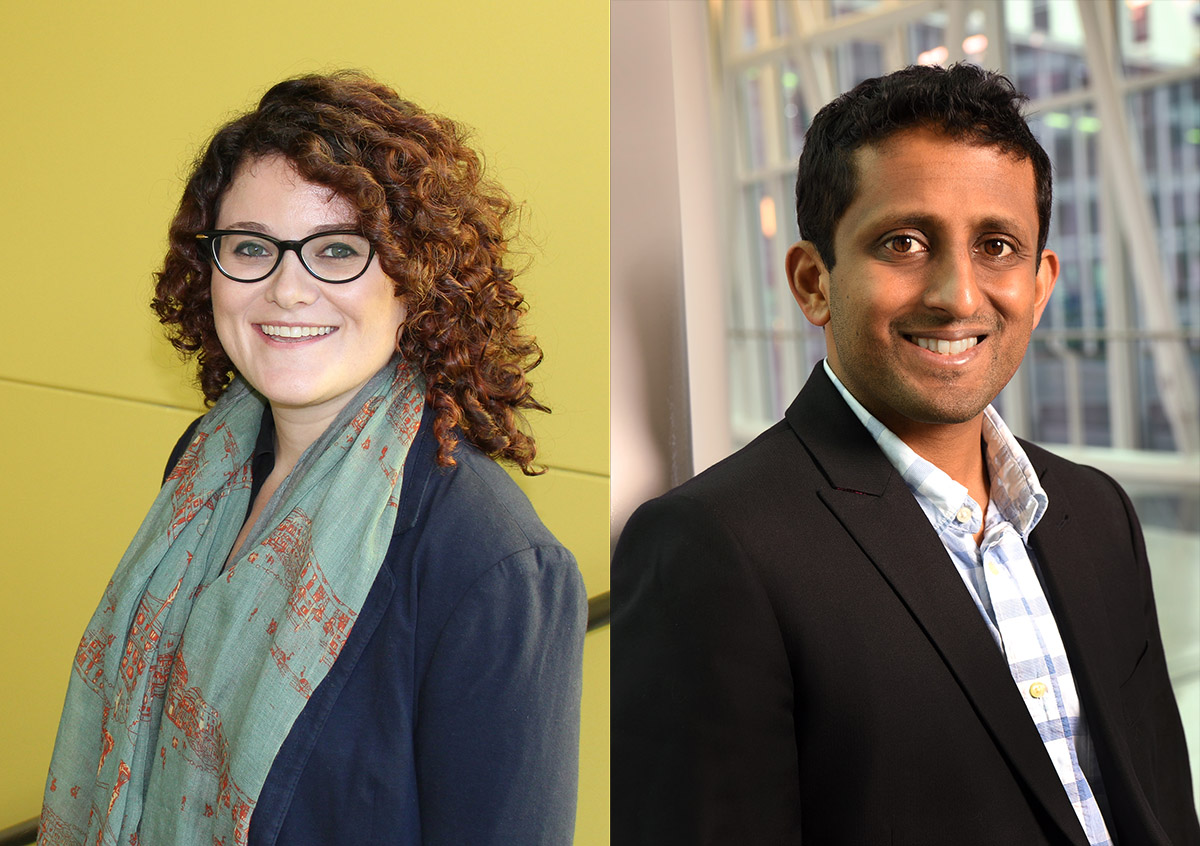How Biomedical Neuroengineering Can Make Our Collective Future Brighter
Eva Dyer and Chethan Pandarinath, both assistant professors in Emory and Georgia Tech's Coulter Department of Biomedical Engineering, were awarded Sloan Research Fellowships for early career scholars. We spoke with them about the future of brain research, why it's better to study thousands of neurons at a time, and what neurons and birds have in common.

Eva Dyer and Chethan Pandarinath
What is the big question about the brain right now?
CP: How to fix it. My area of research is neuroengineering, which focuses on repairing the nervous system in cases of injury or disease. We bring in cutting-edge computational techniques and artificial intelligence to better understand the brain, and use these insights to develop new strategies and therapies to repair the brain.
ED: When we study disease models, we would like to learn signatures of brain disease from data. Because brains are so individual, however, they each produce different measurements. I want to build expressive models that capture this variability. Personalization in health care could end up being critical in the study of brain disease.
Where do you see the field of neuroengineering heading?
CP: The brain is incredibly complex, made up of billions of individual neurons that are intricately connected into powerful networks. Yet we’ve mostly been able to study the activity of one or a handful of neurons at a time. Now, we’re getting tools that will enable us to monitor many thousands of neurons simultaneously, as well as read the massive data sets this creates through artificial intelligence techniques known as “deep learning.” This allows us to uncover relationships we’ve never been able to pull out in the past.
ED: Being able to record and interpret the activity of neural populations “in the wild” will likely contribute to major breakthroughs in our understanding of the brain.
How about your own research?
ED: I am excited about the possibility of leveraging information about the brain’s architecture to build and inspire the design of the next generation of deep learning architectures.
CP: We already have a rich history of using deep brain stimulation for disorders like Parkinson’s disease, and cochlear implants to restore hearing for people who are deaf. Now we’re seeing emerging applications of closed-loop brain stimulation to treat epilepsy, depression, psychiatric disorders, and memory.
You've compared the behavior of neurons in the brain to the flocking of birds. Tell us more.
CP: When you look at a flock of birds, you see these beautiful patterns pop out, and complex, coordinated behaviors, even though there’s not one leader coordinating the flock’s activities and telling them what to do. You just have a bunch of individuals doing their own thing, but through very basic interactions, the group as a whole does something that’s tightly coordinated. Neurons are very similar! You have a bunch of individual neurons that behave in certain ways, but the fact that they’re all wired up together and interacting with each other results in this coordinated, emergent system that is capable of doing really profound things.




